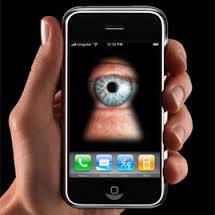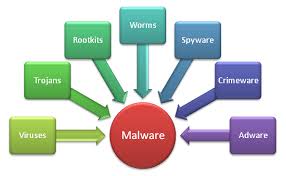 The SANS institute released the results of a new survey recently, and found that cybersecurity professionals ranked phishing as the number one exploit this year. Phishing awareness training programs were seen by many as the best defense against phishing, spearphishing and whaling exploits. Something that was new this year was the reporting of so-called “malware-less” exploits that use “the built-in features of the operating system to turn it against itself without downloading ...
The SANS institute released the results of a new survey recently, and found that cybersecurity professionals ranked phishing as the number one exploit this year. Phishing awareness training programs were seen by many as the best defense against phishing, spearphishing and whaling exploits. Something that was new this year was the reporting of so-called “malware-less” exploits that use “the built-in features of the operating system to turn it against itself without downloading ...
AUG





 I read an interesting article on Naked Security the other day about how Hamas had used Facebook and social engineering tactics to trick Israeli soldiers into installing surveillance malware. The malware allowed Hamas to track the soldiers using the phone’s GPS, and to turn on the microphone and video to actually listen in and and watch their targets. Hamas undoubtedly picked up the ...
I read an interesting article on Naked Security the other day about how Hamas had used Facebook and social engineering tactics to trick Israeli soldiers into installing surveillance malware. The malware allowed Hamas to track the soldiers using the phone’s GPS, and to turn on the microphone and video to actually listen in and and watch their targets. Hamas undoubtedly picked up the ... On Wednesday we talked about a phishing exploit that used malware to provide remote access and steal the personal information of the victims. Today we continue the story with a similar exploit, called “Fareit” to “ferret out” the user credentials and other personal information the victims.
On Wednesday we talked about a phishing exploit that used malware to provide remote access and steal the personal information of the victims. Today we continue the story with a similar exploit, called “Fareit” to “ferret out” the user credentials and other personal information the victims. Mobile smart devices have all the capabilities of a laptop or computer. What this means from a cybersecurity perspective is that they are every bit as vulnerable as a laptop or desktop computer. The fact that they are small makes them easy for a thief to slip in a pocket or backpack and carry away, along with your personal information, contacts, pictures, geo-location history, and a raft of critical and revealing ...
Mobile smart devices have all the capabilities of a laptop or computer. What this means from a cybersecurity perspective is that they are every bit as vulnerable as a laptop or desktop computer. The fact that they are small makes them easy for a thief to slip in a pocket or backpack and carry away, along with your personal information, contacts, pictures, geo-location history, and a raft of critical and revealing ... Today we are going to look at the symptoms that your computer may be displaying that are indications of a malware infection.
Today we are going to look at the symptoms that your computer may be displaying that are indications of a malware infection.